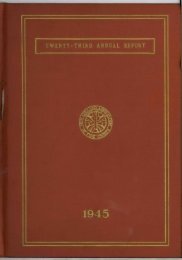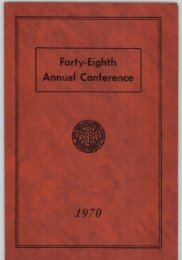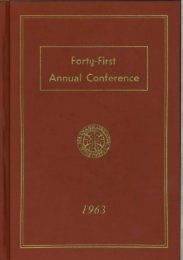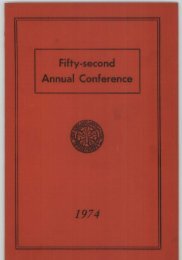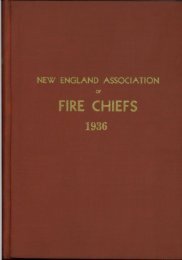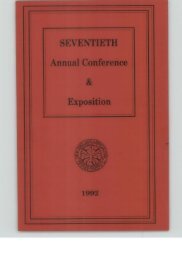- Page 2:
MAXIM MOTOR COMPANY ESTABLISHED 188
- Page 5 and 6:
ADVERTISERS INDEX... Clark l~Ietal
- Page 7 and 8:
ADVERTISERS INDEX... ~£ontpelier D
- Page 9 and 10:
NEW ENGLAND ASSOCIATION OF FIRE CHI
- Page 11 and 12:
NEW ENGLAND ASSOCIATION OF FIRE CHI
- Page 13 and 14:
NEW ENGLAND ASSOCIATION OF FIRE CFI
- Page 15 and 16:
NEW ENGLAND ASSOCIATION OF FIRE CHI
- Page 17 and 18:
NEW ENGLAND ASSOCIATION OF FIRE CHI
- Page 19 and 20:
NEW ENGLAND ASSOCIATION OF FIRE CHI
- Page 21 and 22:
NEW ENGLAND ASSOCIATION OF FIRE CHI
- Page 23 and 24:
NEW ENGLAND ASSOCIATION OF FIRE CHI
- Page 25 and 26:
NEW ENGLAND ASSOCIATION OF FIRE CHI
- Page 27 and 28:
NEW ENGLAND ASSOCIATION OF FIRE CHI
- Page 29 and 30:
NEW ENGLAND ASSOCIATION OF FIRE CHI
- Page 31 and 32:
NEW ENGLAND ASSOCIATION OF I~IEE CH
- Page 33 and 34:
BE IT RESOLVED: That we extend to t
- Page 35 and 36:
NEW ENGLAND ASSOCIATION OF FIRE CHI
- Page 37 and 38:
NEW ENGLAND ASSOCIATION OF FIRE CHI
- Page 39 and 40:
NEW ENGLAND ASSOCIATION OF FIRE CHI
- Page 41 and 42:
NEW ENGLAND ASSOCIATION OF FII~,E ,
- Page 43 and 44:
NEW ENGLAND ASSOCIATION OF FIRE CHI
- Page 45 and 46:
NEW ENGLAND ASSOCIATION OF FIRE CHI
- Page 47 and 48:
NEW ENGLAND ASSOCIATION OF FIRE CHI
- Page 49 and 50: NEW ENGLAND ASSOCIATION OF FIRE CHI
- Page 51 and 52: NEW ENGLAND ASSOQIATION OF FIRE CHI
- Page 53 and 54: NEW ENGLAND ASSOCIATION OF I~IRE CH
- Page 55 and 56: NEW ENGLAND ASSOCIATION OF FIRE CHI
- Page 57 and 58: NEW ENGLAND ASSOCIATION OF FIRE CHI
- Page 59 and 60: NEW ENGLAND ASSOCIATION OF FIRE CHI
- Page 61 and 62: NEW ENGLAND ASSOCIATION OF ~FIRE ,C
- Page 63 and 64: N]~W ENGLAND A~,~O~IATION OF FIRE ,
- Page 65 and 66: NEW ENGLAND ASSOCIATION OF FIRE CHI
- Page 67 and 68: NEW ENGLAND ASSOCIATION OF FIRE CHI
- Page 69 and 70: NEW ENGLAND ASSOCIATION OF FIRE CHI
- Page 71 and 72: N]~W ENGLAND ASSOCIATION OF I~IRE C
- Page 73 and 74: ¯ NEW ENGLAND ASSOCIATION OF FIRE
- Page 75 and 76: NEW ENGLAND ASSOCIATION OF FIRE Ctt
- Page 77 and 78: NEW ENGLAND ASSOCIATION OF FIRE CHI
- Page 79 and 80: NEW ENGLAND ASSOCIATION OF FIRE CH~
- Page 81 and 82: NEW ENGLAND ASSOCIATION OF FIRE CHI
- Page 83 and 84: NEW ENGLAND ASSOCIA~[.~ION ,OF FIRE
- Page 85 and 86: NEW ENGLAND ASSOCIATION OF FIRE CHI
- Page 87 and 88: NEW ENGLAND ASSOCIATION OF FIRE CHI
- Page 89 and 90: NE,W ENGLAND ASSOCIATION OF FIRE CH
- Page 91 and 92: NEW ENGLAND ASSOCIATION OF FIRE CHI
- Page 93 and 94: NEW ENGLAND ASSOCIATION OF FIRE, CH
- Page 95 and 96: NEW ENGLAND ASSOCIATION OF FIRE CHI
- Page 97 and 98: NEW ENGLAND ASSOCIATION OF FIRE CI-
- Page 99: NEW ENGLAND ASSOCIATION OF FIRE CHI
- Page 103 and 104: NEW ENGLAND ASSOCIATION OF FIRE CHI
- Page 105 and 106: NEW ENGLAND ASSOCIATION OF FIRE CHI
- Page 107 and 108: NEW ENGLAND ASSOCIATION OF FIRE CHI
- Page 109 and 110: who are All bilities: NEW ENGLAND A
- Page 111 and 112: NEW ENGLAND ASSOCIATION OF FIRE CHI
- Page 113 and 114: NE,W ENGLAND ASSOCIATION OF FIRE CH
- Page 115 and 116: NEW ENGLAND ASSOCIATION OF FIRE CHI
- Page 117 and 118: NEW ENGLAND A.SSOCIATION OF FIRE CH
- Page 119 and 120: NEW ENGLAND ASSOCIATION OF FIRE CHI
- Page 121 and 122: NE,W ENGLAND AS, SOCIATI, ON OF FIR
- Page 123 and 124: NEW ENGLANI) ASSOCIATION OF FIRE CH
- Page 125 and 126: NE:W ENGLAND ASSOCIATION OF FIRE CH
- Page 127 and 128: NEW ENGLAND XSSOCIATION OF I~IRE CH
- Page 129 and 130: NEW EN’GLAND ASSOCIATION OF FIRE
- Page 131 and 132: NI~W ENGLAND ASSOCIATION OF FIRE CH
- Page 133 and 134: NEW ENGLAND ASSOCIATION OF FIRE CHI
- Page 135 and 136: NEW ENGLAND ASSOCIATION OF FIRE CHI
- Page 137 and 138: NEW ENGLAND ASSOCIATION oF FIRE CHI
- Page 139 and 140: NEW ENGLAND A.SSOCiATION OF FIRE CH
- Page 141 and 142: NEW ENGLAND A,SSOCI~TION OF FIRE ~C
- Page 143 and 144: NEW ENGLAND ASSOCIATION OF FIRE CHI
- Page 145 and 146: NEW ENGLAND ASSOCIATION OF FIRE CHI
- Page 147 and 148: NEW EN’GLAND ASSOCIATION OF FIRE
- Page 149 and 150: NEW ENGLAND ASSOCIATION OF FIRE CHI
- Page 151 and 152:
NEW EN~LAND ASSOCIATION OF I~IRE CH
- Page 153 and 154:
NEW EN’GLAND ASSOCIATION 0F FIRE
- Page 155 and 156:
NEW ENGLAND ASSOCIATION OF FIRE CHI
- Page 157 and 158:
N]~W ENGLAND ASSOCIATION OF FIRE CH
- Page 159 and 160:
NEW ENGLAND ASSOCIATION OF FIRE CHI
- Page 161 and 162:
NEW ENGLAND ASSOCIATION OF FIRE CHI
- Page 163 and 164:
NEW ENGLAND ASSOCIATION OF FIRE CHI
- Page 165 and 166:
NEW ENGLAND ASSOCIATION OF ~IRE CHI
- Page 167 and 168:
NEW ENC~LAND ASSOCIATION OF FIRE CH
- Page 169 and 170:
NEW ENGLAND A, ssOCIATION OF ~IRE C
- Page 171 and 172:
NEW ENGLAND ASSOCIATION OF FIRE CHI
- Page 173 and 174:
NEW ENGLAND ASSOCIATION OF I~IRE CH
- Page 175 and 176:
NEW EN’GLAND ASSOCIATION OF FIRE
- Page 177 and 178:
NEW ENGLAND A,SSOCIATION OF FIRE CH
- Page 179 and 180:
NEW ENGLAND ASSOCIATION, OF I~IRE C
- Page 181 and 182:
NEW ENGLAND ASSOCIATION OF FIRE CHI
- Page 183 and 184:
NEW I~;NGLAND ASSOCIATION O1: FIRE
- Page 185 and 186:
NEW ENGLAND A, SSOCIATION OF FIRE C
- Page 187 and 188:
NEW ENGLAND ASSOCIATION OF FIRE ,CH
- Page 189 and 190:
NEW ENGLAND ASSOCIATION OF FIRE CHI
- Page 191 and 192:
NEW ENGLAND ASSOCIATION OF FIRE CHI
- Page 193 and 194:
NEW ENGLAND ASSOCIATION OF FIRE ,CH
- Page 195 and 196:
NEW ENGLAND ASSOCIATION OF FIRE CHI
- Page 197 and 198:
NEW ENGLAND ASSOCIATION OF FIRE CI-
- Page 199 and 200:
NEW ENGLAND ASSOCIATION OF FIRE CHI
- Page 201 and 202:
NEW ENGLAND ASSOCIATION OF FIRE CHI
- Page 203 and 204:
NEW ENGLAND ASSOCIATION OF FIRE CHI
- Page 205 and 206:
NEW ENGLAND ASSOCIATION OF FIRE CHI
- Page 207 and 208:
NEW ENGLAND ASSOCIATION OF FIRE CHI
- Page 209 and 210:
NEW ENGLAND ASSOCIATION OF FIRE CHI
- Page 211 and 212:
NEW ENGLAND ASSOCIATION OF FIRE CHI
- Page 213 and 214:
NEW ENGLAND ASSOCIATION OF FIRE CHI
- Page 215 and 216:
NEW ENGLAND ASSOCIATION OF FIRE CHI
- Page 217 and 218:
NEW ENGLAND ASSOCIATION OF FIRE CHI
- Page 219 and 220:
NEW ENGLAND ASSOCIATION OF FIRE CHI
- Page 221 and 222:
NEW ENGLAND ASSOCIATION OF FIRE CHI
- Page 223 and 224:
NEW ENGLAND ASSOCIATION OF FIRE CHI
- Page 225 and 226:
NEW ENGLAND ASSOCIATION OF I~IRE CH
- Page 227 and 228:
NEW ENGLAND ASSOCIATION OF FIRE C:H
- Page 229 and 230:
NEW ENGI~AND ASSOCIATION OF FIRE CH
- Page 231 and 232:
NEW ENGLAND ASSOCIATION OF FIRE CI-
- Page 233 and 234:
NEW ENGLAND ASSOCIATION OF FIRE CHI
- Page 235 and 236:
NEW ENGLAND ASSOCIATI.0N OF FIRE CH
- Page 237 and 238:
¯ NEW ENGLAND ASSOCIATION OF FIRE
- Page 239 and 240:
NEW ENGLAND ASSOCIATION OF FIRE CHI
- Page 241 and 242:
NEW ENGLAND ASSOCIATION OF FIRE CHI
- Page 243 and 244:
NEW ENGLAND ASSOCIATION OF I~IRE C,
- Page 245 and 246:
NEW ENGLAND ASSOCIATION OF FIRE CHI
- Page 247 and 248:
702 NEW ENGLAND ASSOCIATION OF FIRE
- Page 249 and 250:
NEW ENGLAND ASSOCIATION OF FIRE CHI
- Page 251 and 252:
NEW ENGLAND ASSOCIATION OF FIRE CHI
- Page 253 and 254:
NEW ENGLAND ASSOCIATION OF FIRE CHI
- Page 255 and 256:
NEW ENGLAND ASSOCIAT_ION OF FIRE CH
- Page 257 and 258:
NEW ENGLAND ASSOCIATION OF FII%E CH
- Page 259 and 260:
NEW ENGLAND ASSOCIATION OF FIRE CHI
- Page 261 and 262:
NEW ENGLAND ASSOCIATION OF FIRE CHI
- Page 263 and 264:
NEW ENGLAND ASSOCIATION OF I~IRE CH
- Page 265 and 266:
NEW ENGLAND ASSOCIATION OF FIRE CHI
- Page 267 and 268:
NEW ENGI,.\ND ASSOCIATION OF FIRE C
- Page 269 and 270:
NEW ENGLAND ASSOCIATION OF FIRE CI-
- Page 271 and 272:
NEW ENGLAND ASSOCIATION OF FIRE CHI
- Page 273 and 274:
NEW ENGLAND ASSOCIATION OF FIRE CHI
- Page 275 and 276:
NEW ENGLAND ASSOCIATION OF FIRE CHI
- Page 277 and 278:
NEW ENGLAND ASSOCIATION OF FIRE CHI
- Page 279 and 280:
NEW ENGLAND ASSOCIATION OF FIRE CHI
- Page 281 and 282:
NEW ENGLAND ASSOCIATION OF FIRE CHI
- Page 283 and 284:
NEW ENGLAND ASSOCIATION OF FIRE CHI
- Page 285 and 286:
NEW ENGLAND ASSOCIATION OF FIRE CHI
- Page 287 and 288:
NEW ENGLAND ASSOCIATION OF FIRE CHI
- Page 289 and 290:
NEW ENGLAND ASSOCIATION OF FIRE CHI
- Page 291 and 292:
NEW ENGLAND ASSOCIATION OF FIRE CHI
- Page 293 and 294:
NEW ENGLAND ASSOCIATION OF FIRE CHI
- Page 295 and 296:
NEW ENGLAND ASSOCIATION OF FIRE CHI
- Page 297 and 298:
NEW ENGLAND ASSOCIATION OF FIRE Ctt
- Page 299 and 300:
NEW ENGLAND ASSOCIATION OF FIRE CHI
- Page 301 and 302:
................. ~NEW ENGLAND ~.SS
- Page 303 and 304:
NEW ENGLAND ASSOCIATION OF FIRE CHI
- Page 305 and 306:
NEW ENGLAND ASSOCIATION OF FIRE CHI
- Page 307 and 308:
NEW ENGLAND ASSOCIATION OF FIRE CHI
- Page 309 and 310:
NEW ENGLAND A,S’SOCIATION ~OF FIR
- Page 311 and 312:
NEW ENGLAND ASSOCIATION OF FIRE CHI
- Page 313 and 314:
NEW ENGLAND ASSOCIATION ,OF FIRE CH
- Page 315 and 316:
NEW ENGLAND ASSOCIATION OF FIRE CHI
- Page 317 and 318:
NEW ENGLAND A,SS0CIATION OF FIRE CH
- Page 319 and 320:
NEW ENGLAND ASSOCIATION ,OF FIRE CH
- Page 321 and 322:
NEW ENGLAND ASSOCIATION ,OF FIRE CH
- Page 323 and 324:
NEW ENGLAND ASSOCIATI~.~ OF FIRE C~
- Page 325 and 326:
NEW ENGLAND ASSOCIATION OF FIRE CHI
- Page 327 and 328:
NEW ENGLAND ASSOCIATION OF FIRE CHI
- Page 329 and 330:
NEW ENGLAND ASSOCIATION ,OF FIRE CH
- Page 331 and 332:
NEW IENGLAND ASSOCIATION OF FIRE CH
- Page 333 and 334:
NEW ENGLAND ASSOCIATION OF FIRE CHI
- Page 335 and 336:
NEW ENGLAND ASSOCIATION OF FIRE CHI
- Page 337 and 338:
NEW ENGLAND ASSOCIATION OF FIRE CHI
- Page 339 and 340:
N’EW ENGLAND ASSOCIATION OF. FIRE
- Page 341 and 342:
NEW ENGLAND ASSOCIATION OF FIRE CHI
- Page 343 and 344:
NEW ENGLAND ASSOCIATION OF FIRE CHI
- Page 345 and 346:
NEW ENGLAND ASSOCIATION OF FIRE CHI
- Page 347 and 348:
NEW ~ ENGLAND’!,ASSOCIATION% OF:F
- Page 349 and 350:
NEW ENGLAND ASSOCIATION OF FIRE CHI
- Page 351 and 352:
NEW ENGLAND ASSOCIATION OF FIRE CHI
- Page 353 and 354:
NEW ENGLAND ASSOCIATION OF FIRE CHI
- Page 355 and 356:
NEW ENGLAND ASSOCIATION OF FIRE CHI
- Page 357 and 358:
ASSOCIATION OF FIRE OI-IIEF~ TOTAL
- Page 359 and 360:
N~W ENGLAND ASSOCIATION OF FIRE CHI
- Page 361 and 362:
NEW E~N’GLANY) ASSOCIATION OF FIR
- Page 363 and 364:
NEW ENGLAND ASSOCIATION OF FIRE CHI
- Page 365 and 366:
NEW ENGLAND ASSOCIATION OF FIRE CHI
- Page 367:
DON’T OVERLOOK THE CONNECTING LIN



